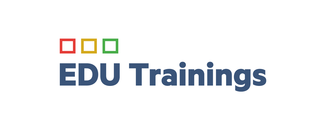Detail kurzu
SAS® Forecasting and Econometrics Learning Subscription
EDU Trainings s.r.o.
Popis kurzu
Learn how to generate large quantities of high-quality forecasts quickly and automatically (with no need for human intervention unless you want it) using SAS Forecast Server, SAS/ETS, SAS Visual Forecasting, and Model Studio on the SAS Viya platform. An easy-to-use GUI gives you the power to forecast without having to write code, unless you want to. A batch environment gives more-advanced users access to an even fuller set of capabilities using the SAS programming language. Algorithms provide automatic model diagnosis, generation, and selection for a wide range of signal components. Test what-if scenarios to determine the likely impact of your forecasts.
SAS Products Covered
SAS/ETS
SAS/STAT
SAS Forecast Server
SAS Studio
SAS Visual Forecasting
SAS Viya Learn how to:
Conduct time series exploration and analysis. Build time series forecast models for time series with trend and seasonality and test for stationarity.
Use your models to assess the impact of events, sales, marketing promotions, and natural or man-made disasters.
Create time series data, accommodate trends, and diagnose, fit, and interpret exponential smoothing models, ARIMAX models, and unobserved components models, while learning how to understand the strengths and weaknesses of each type of model.
Take advantage of a flexible and visual approach to modeling sequential data using the SSM procedure (SAS/ETS).
Generate large-scale, automatic forecasts. Build and share custom pipelines for large-scale forecasting analyses using Model Studio on the SAS Viya platform.
Incorporate external models and functionality from other languages (Python, R, etc.).
SAS Products Covered
SAS/ETS
SAS/STAT
SAS Forecast Server
SAS Studio
SAS Visual Forecasting
SAS Viya Learn how to:
Conduct time series exploration and analysis. Build time series forecast models for time series with trend and seasonality and test for stationarity.
Use your models to assess the impact of events, sales, marketing promotions, and natural or man-made disasters.
Create time series data, accommodate trends, and diagnose, fit, and interpret exponential smoothing models, ARIMAX models, and unobserved components models, while learning how to understand the strengths and weaknesses of each type of model.
Take advantage of a flexible and visual approach to modeling sequential data using the SSM procedure (SAS/ETS).
Generate large-scale, automatic forecasts. Build and share custom pipelines for large-scale forecasting analyses using Model Studio on the SAS Viya platform.
Incorporate external models and functionality from other languages (Python, R, etc.).
Obsah kurzu
Includes the following on-demand courses:Stationarity Testing and Other Time Series Topics
This course addresses a basic question in time series modeling and forecasting: whether a time series is nonstationary. This question is addressed by the unit root tests. One of the most common tests, the Dickey-Fuller test, is discussed in this lecture.
Forecasting Using SAS Software: A Programming Approach
This course teaches analysts how to use SAS/ETS software to diagnose systematic variation in data collected over time, create forecast models to capture the systematic variation, evaluate a given forecast model for goodness of fit and accuracy, and forecast future values using the model. Topics include Box-Jenkins ARIMA models, dynamic regression models, and exponential smoothing models.
Forecasting Using SAS Forecast Server Software
This course prepares you to generate large volumes of forecasts automatically using the SAS Forecast Studio interactive interface. This course includes practice data and exercises.
This course supports both the desktop and client/server versions. Additional topics for students that license the client/server version of SAS Forecast Studio include producing reports using sample stored processes and a demonstration of SAS Time Series Studio.
The self-study e-learning includes:
Annotatable course notes in PDF format.
Virtual Lab time to practice.
Using SAS Forecast Server Procedures
This course teaches you how to create and manage a complete forecasting system using the SAS Forecast Server procedures, giving you the power to confidently plan your business operations.
Time Series Modeling Essentials
This course discusses the fundamentals of modeling time series data. The course focuses on the applied use of the three main model types used to analyze univariate time series: exponential smoothing, autoregressive integrated moving average with exogenous variables (ARIMAX), and unobserved components (UCM).
The e-learning format of this course includes Virtual Lab time to practice.
State Space Modeling Essentials Using the SSM Procedure in SAS/ETS
This course covers the fundamentals of building and applying state space models using the SSM procedure (SAS/ETS). Students are presented with an overview of the model and learn advantages of the State Space approach. The course also describes fundamental model details, presents some straightforward examples of specifying and fitting models using the SSM procedure, and considers estimation in SSM, focusing on the Kalman filter and related details. The course concludes with a variety of SSM modeling applications, focused mainly on time series.
Forecasting Using Model Studio in SAS Viya
This course provides a hands-on tour of the forecasting functionality in Model Studio, a component of SAS Viya. The course begins by showing how to load the data into memory and visualize the time series data to be modeled. Attribute variables are introduced and implemented in the visualization. The course then covers the essentials of using pipelines for generating forecasts and selecting champion pipelines in a project. It also teaches you how to incorporate large-scale forecasting practices into the forecasting project. These include the creation of data hierarchies, forecast reconciliation, overrides, and best practices associated with forecast model selection.
Models for Time Series and Sequential Data
This course teaches students to build, refine, extrapolate, and, in some cases, interpret models designed for a single, sequential series. There are three modeling approaches presented. The traditional, Box-Jenkins approach for modeling time series is covered in the first part of the course. This presentation moves students from models for stationary data (or ARMA) to models for trend and seasonality (ARIMA) and concludes with information about specifying transfer function components in an ARIMAX, or time series regression, model. A Bayesian approach to modeling time series is considered next. The basic Bayesian framework is extended to accommodate autoregressive variation in the data as well as dynamic input variable effects. Machine learning algorithms for time series is the third approach. Gradient boosting and recurrent neural network algorithms are particularly well suited for accommodating nonlinear relationships in the data. Examples are provided to build intuition on the effective use of these algorithms. The course concludes by considering how forecasting precision can be improved by combining the strengths of the different approaches. The final lesson includes demonstrations of creating combined (or ensemble) and hybrid model forecasts.
Time Series Feature Mining and Creation
In this course, you learn about data exploration, feature creation, and feature selection for time sequences. The topics discussed include binning, smoothing, transformations, and data set operations for time series, spectral analysis, singular spectrum analysis, distance measures, and motif analysis.
Large-Scale Forecasting Using SAS Viya: A Programming Approach
This course teaches students how to develop and maintain a large-scale forecasting project using SAS Visual Forecasting tools. For the course project, students build and then refine a large-scale forecasting system. Emphasis is initially on selecting appropriate methods for data creation and variable transformations, model generation, and model selection. Students are then asked to improve overall baseline forecasting performance by modifying default processes in the system.
Cieľová skupina
For forecasters and analysts who want to learn how to generate trustworthy forecasts, either automatically, with less manual intervention, reducing the opportunity for personal bias, or with highly customizable code to obtain the best models possible for your data. Learn how to streamline your forecasting processes in order to focus efforts on the most important, high-value decisions.
Certifikát
Na dotaz.
Hodnotenie
Organizátor
Podobné kurzy
podľa názvu a lokality







